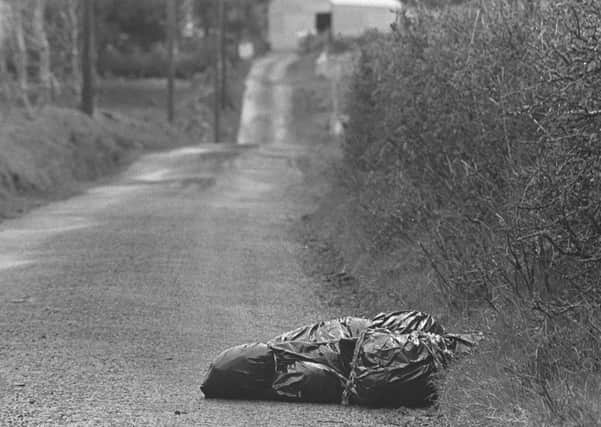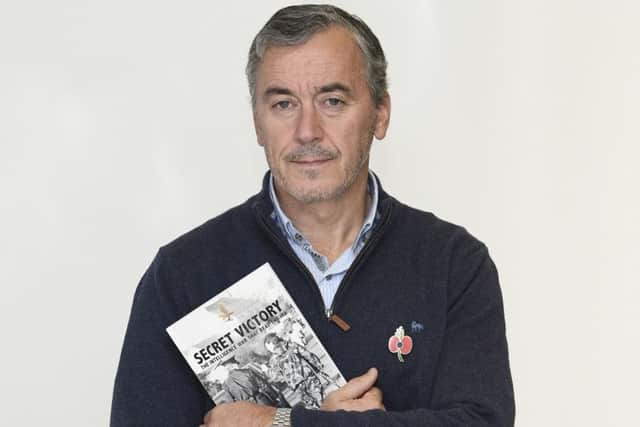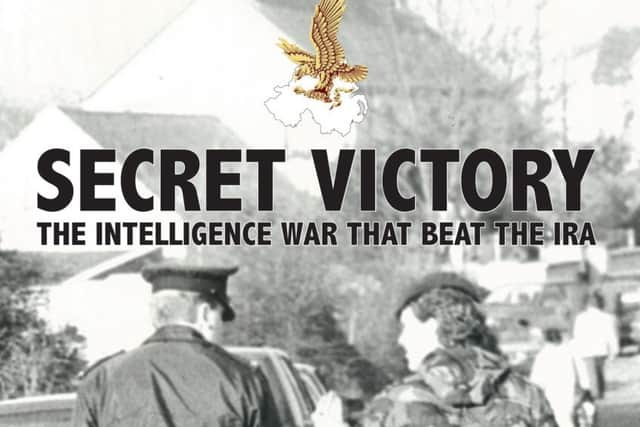Secret war with the IRA: '˜No agent had a licence to kill'


Ancient Chinese warlord Sun Tzu famously said: “Nothing is more demoralising to the enemy than realising that people inside their organisation are providing information to the other side.”
Agents provided detailed information on terrorist organisations. A system was used to categorise them, with those who were members of terrorist organisations, or what can be called well-placed agents, the smallest category.
Advertisement
Hide AdAdvertisement
Hide AdSpecial Branch (SB) also had relationships with people who were not agents, people below the radar of terrorist organisations and the security forces because they were usually middle class professionals with no connection whatsoever with terrorism.


They were uniquely placed to assist with discreet inquiries and requests, such as an employer providing details about his staff or the owner/occupier of a building allowing a covert camera in it to monitor a specific location. Unlike agents, they were not paid a monthly retainer or rewarded for results. A small gift at Christmas or the occasional gratuity was it. Money was not a motivating factor. They were decent people who abhorred terrorism and supported the rule of law.
Former SB detectives reckon an IRA green-booked agent (a common term for a fully fledged IRA member) saved around 37 lives per year but were a tiny portion of the agent stable. The SB/agent relationship was secret and invariably long-term. Although for a well-placed agent it could be a short shift. Being an integral part of a terrorist cell routinely engaged in murder plots and the deadly fallout when these went wrong was a perilous existence.
But it is extremely difficult, albeit not impossible, for someone to know the secrets of a terrorist organisation without being in it.
Advertisement
Hide AdAdvertisement
Hide AdWhat all these people did was potentially fatal. For the IRA and loyalist terrorist organisations anyone they believed were ‘helping’ SB in anyway was a certainty to be shot dead.


Well-placed agents carried the greatest risk but also the greatest reward, producing the majority of quality and life saving intelligence. All types of agent provided information on the IRA that ranged from identifying a suspect’s address to giving details on an impending attack. While a Regional Head of SB would be aware of his own agent stable he was unaware of others. Only a select handful in SB knew what its network of agents looked like in its totality.
The true identity of agents and other members of the public who helped the police was jealously guarded on a strict ‘need to know’ basis. Even using the word agent in conversation was off limits. Under no circumstances were real names mentioned. Which is ultimately what terrorist organisations wanted to know.
How desperate they were (and still are) to find out is illustrated by the IRA breaking into SB’s main Belfast office in 2002, four years after the conflict ended. The risk of being an agent did not end with the Troubles.
Advertisement
Hide AdAdvertisement
Hide AdConversely, in the traditional crime context was an ‘informant,’ someone giving occasional information to CID in a short-term as-and-when confidential relationship. Informants were not categorised. Their information was on ordinary crime, usually after-the-event and mostly from loose talk. The risk of being exposed was seldom life threatening. They were a minor aid in an investigative strategy.


In an ideal world people are not afraid to come forward and testify against offenders in open court and are willing to do so because they support the rule of law. But Northern Ireland circa 1969 to 1998 was far from ideal, so the opposite applied.
How people could give information to the police without anyone else knowing was a big issue. Agents are completely different to informants and also to what the public and most police believe when thinking of this subject. When one knows how SB defined intelligence and the context the security forces were operating in, the agent concept makes sense.
The difference between agent and informant mirrors the difference between intelligence-led policing and investigative-led policing. Understanding this is crucial to understanding SB.
Advertisement
Hide AdAdvertisement
Hide AdAgents in illegal republican terrorist organisations saved at least 16,500 lives in the Troubles. A former SB detective chief superintendent assesses that 15 well-placed agents were active at any one time in the IRA (1:33 ratio when based on an IRA of 500). On a yearly basis, considering a well-placed agent on average saved 37 lives per year, this equates to 555, which over 30 years is 16,650 lives. This excludes other types of agents and 40% of the intelligence effort against the IRA. It also completely excludes loyalist terrorist organisations.


Agents were a force multiplier, inducing paranoia in the IRA and loyalist terrorist organisations that prevented many attacks.
Sixteen and a half thousand is not an inflated estimate. In numbers it shows the IRA’s true intent and what underpinned an 85% prevention rate. Agents were preventing murders almost as fast as the Provos were planning them.
Provo ideology portrays agents as sub-human, naturally enough given that they had to find ways to justify their sectarian terror campaign.
Advertisement
Hide AdAdvertisement
Hide AdAgents were the resistance movement within, the sole and silent voice of sanity in a regime intoxicated by a rancid ideology. Most saw IRA killings as a needless waste of life designed to advance the hidden agenda of republican leaders and not the movement.
Quite a few were sickened by those in the IRA who enjoyed killing. Many realised the ‘armed struggle’ was a charade and recognised its sectarian character.
Critics accuse SB of allowing murders to take place to protect agents. They rationalise that maintaining an agent’s position within the IRA was more valuable than the life lost or the life lost was of no consequence. It is called SB ‘playing God,’ an allegation the police found offensive and strenuously denied when accused of having sacrificed three uniform police officers to protect an agent in a 1982 so called ‘shoot-to-kill’ incident.
An offshoot of the allegation is that in running command figures in the IRA (and loyalist terror groups) SB was directing terrorism. SB on the other hand claim that an agent in a command position protected more lives from being in that position than would have been the case otherwise. To be clear on this, no agent, no matter how well placed and irrespective of status or potential, had a licence to kill.
Advertisement
Hide AdAdvertisement
Hide AdThe entire reason for agents was to stop murders. The vast majority of the time they succeeded. But it was not fool-proof.
Everyone could not be saved. Based on the information known at the time, agents were people assessed to be making an honest effort to protect life. Did some agents and SB detectives fall short in this respect? It would be foolish to think they did not. There is a major difference, however, between genuinely trying to protect life and coming up short, and making a conscious decision that someone dies. The latter constitutes murder, which goes against everything an SB detective was trained, told and sworn to do. The net effect of agents was more lives were saved than lost, a vital point the selective moralising of the ‘playing God’ chorus ignores.
Individuals who became agents and others who helped SB are the real heroes of the Troubles. Many are alive today because of them. They had the courage to help the police catch killers and stop murders when most of their community did not.
• ‘Secret Victory: The Intellligence War That Beat The IRA’ by Dr William Matchett – available from www.amazon.co.uk and No Alibis books Belfast from 17 November priced £12.95.